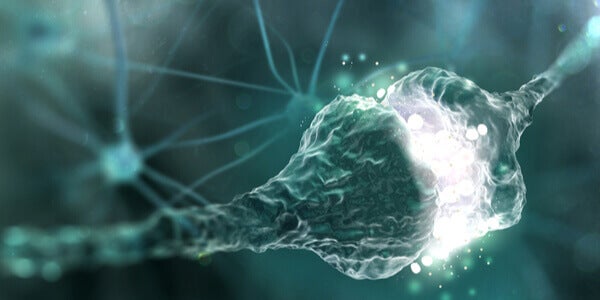In the synapses two neurons are connected so that the information is transmitted, these synapses do not mean direct contact between the two neurons, but they occur in a space or synaptic fissure, which is where the exchange takes place. How does it work? We will try to answer that question.
During chemical synapse, the neuron that transmits information (presynaptic) releases a substance, in this case a neurotransmitter, through the synaptic button, releasing it into synaptic space, also called synaptic fissure. Subsequently, the post-synaptic neuron, which has specific receptors for each neurotransmitter, is responsible for receiving information from dendrites.
- It was the electron microscope that allowed us to discover that communication between neurons did not imply contact with each other.
- But that there is a space where neurotransmitters are released.
- Each of these neurotransmitters has different effects that affect the functioning of the nervous system.
There are mainly two types of synapses: electrical and chemical. The space between presynaptic and postsynaptic neurons is significantly greater in chemical synapses than in electrical ones, called the synaptic space; the main characteristic of these is the presence of membrane-related organelles, called synaptic vesicles, at the presynaptic termination.
Chemical synapses occur as a result of the release of chemicals (neurotransmitters) into the synaptic fissure, which act on the posinaptic membrane, causing depolarization or hyperpolarity; in the presence of electrical synapses, chemistry can modify its signals in response to events.
Neurotransmitters are stored in the terminal button vesicles, when a potential for action reaches the terminal button, depolarization causes Ca channels to open, which penetrate the cytoplasm and cause chemical reactions that cause the vesicles to expel the neurotransmitters.
The vesicles are full of neurotransmitters that act as messengers between communicating neurons. One of the most important neurotransmitters in the nervous system is Acetylcholine, which regulates the functioning of the heart or acts on various post-synaptic white parts of the central and peripheral nervous system.
Previously it was believed that each neuron was able to synthesize or release a single specific neurotransmitter, but today we know that each neuron can release two or more, for a substance to be considered neurotransmitter it must meet the following requirements:
Neurotransmitters affect your goals by interacting with receptors. A substance that binds to a receptor is called ligating and can have three effects:
In the brain, most synaptic communications are made using 2 emitting substances: glutamate with exquisite effects and GABA with inhibitory effects. All other transmitters generally serve as modulators, i. e. their active release or inhibit circuits involved in specific brain functions.
Each neurotransmitter released from synaptic space has its own function, may even have several, it joins a specific receptor and can also influence each other, inhibiting or improving the effect of another neurotransmitter. More than 100 different types of neurotransmitters have been detected and the following are among the best known:
In addition to the neurotransmitters that are released into synaptic space, affecting the receiving neuron, there are exogenous chemicals that can cause an equal or similar response. When we talk about exogenous substances, we are talking about substances from outside the body, as these can produce agonist or antagonistic effects and can also affect different levels of chemical synapses:
Repeated treatments with a particular drug can reduce its effectiveness, called tolerance. Tolerance, in the case of drugs, can lead to increased consumption, increasing the risk of overdose. desired effects, which can lead to the abandonment of the drug.
As noted, synaptic space produces exchanges between presynaptic and post-synaptic cells through the synthesis and release of neurotransmitters with various effects on our body, this complex mechanism can also be modulated or modified by various medications.
References

